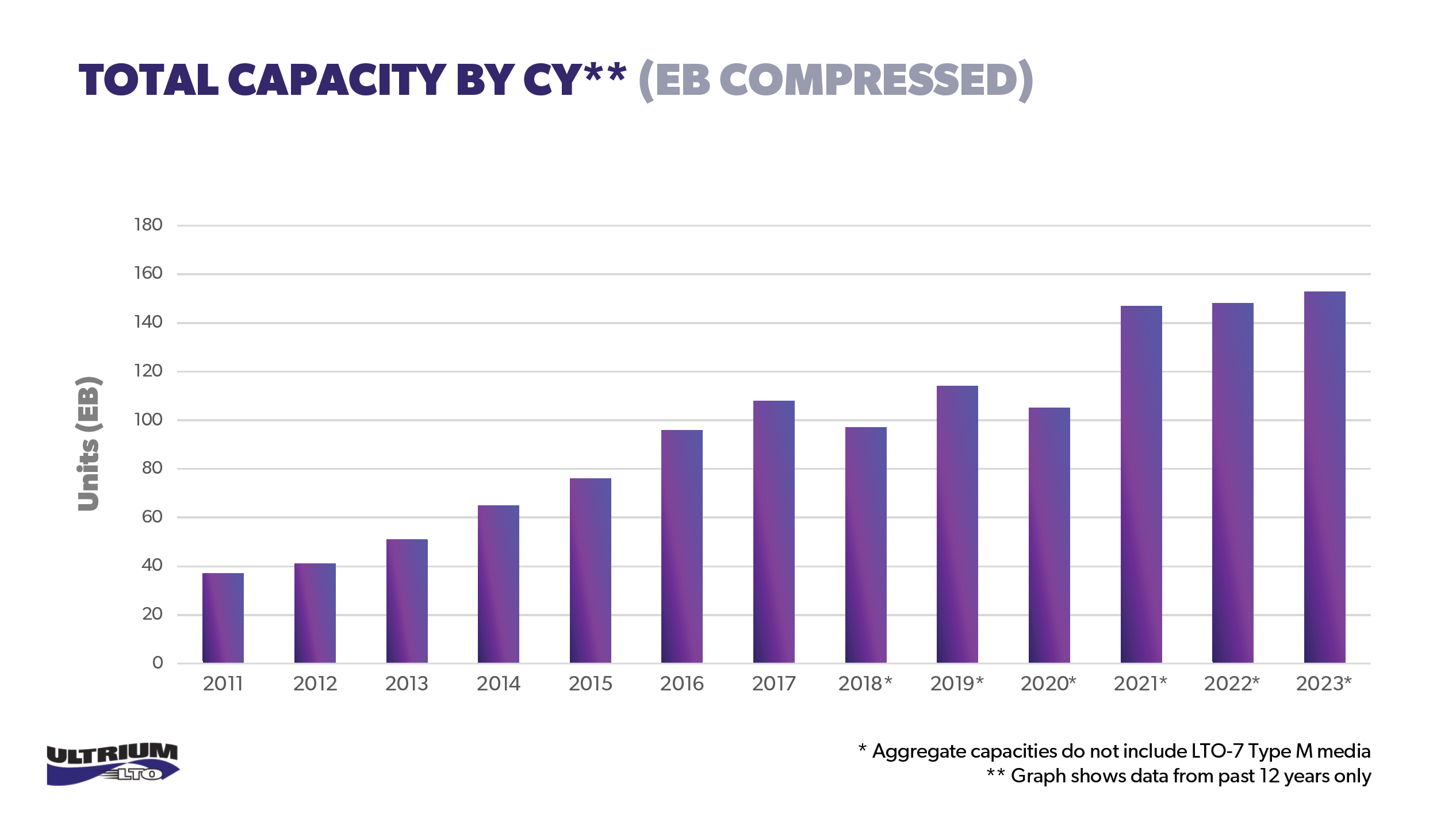In context: The Linear Tape-Open (LTO) format for tape-based magnetic data recording was developed in the Nineties as an open-standard alternative to proprietary tape formats. The technology provides native encryption and compression support, and it is still one of the most used "cold" storage media in data center and enterprise environments.
The three companies behind the LTO Consortium recently released the latest annual report on magnetic tape technology shipments, which set a new storage capacity record in 2023. the LTO members-- Hewlett Packard Enterprise, IBM, and Quantum Corporation – jointly stated jointly said that tape media shipped to market have now reached 152.9 exabytes of total (compressed) capacity, with 1 exabyte being equal to 1 million terabytes or 1 billion gigabytes.
LTO magnetic tapes grew by 3.14 percent over 2022, the consortium said, with hyperscalers and enterprises increasing their storage needs due to "rapid data generation" and increased infrastructure requirements. Needless to say, the LTO Consortium is quoting AI as one of the main reasons for the new record-setting results achieved by LTO shipments.
The LTO Ultrium technology has been around for decades now, providing a cheap and supposedly reliable way to store massive amounts of digital data that can be easily archived offline by simply removing the tapes and physically putting them on the shelves. LTO magnetic tapes aren't exactly quick in I/O operations though, which means that they are mostly used to archive "unstructured data" that doesn't necessarily need constant access.
According to the LTO Consortium, tape is a great solution for the storage challenges created by AI services and other related, data-hungry technologies. Chatbots and ML algorithms increase storage requirements and infrastructure costs, while LTO tapes should make the management of vast amounts of digital data more cost-effective and sustainable.
LTO is an ever-evolving, backward-compatible standard that is now at its ninth generation (LTO-9). An LTO-9 drive provides a 45 TB compressed capacity with a 50 percent increase over LTO-8, or a 1,400 percent increase over LTO-5 tapes introduced a decade ago. LTO-9 transfer speeds go up to 400 megabytes per second in native mode or 1,000 megabytes in compressed mode, with additional embedded features such as hardware-based encryption, immutable WORM (Write-Once, Read-Many) operations.
According to storage analyst Tom Coughlin, the latest annual report by the LTO Consortium highlights the "continued importance" of LTO technology for the world's storage needs. LTO tapes will continue to improve and have a critical role in enterprise storage architectures, providing digital companies and data centers with a solution specifically designed to handle large volumes of data and more intensive workloads. The future of AI is definitely written on tape.

